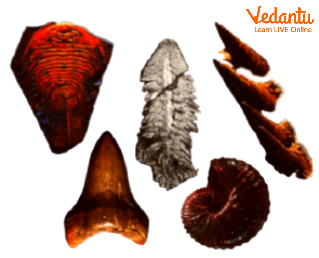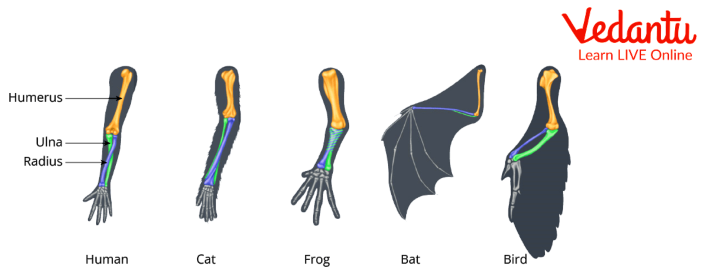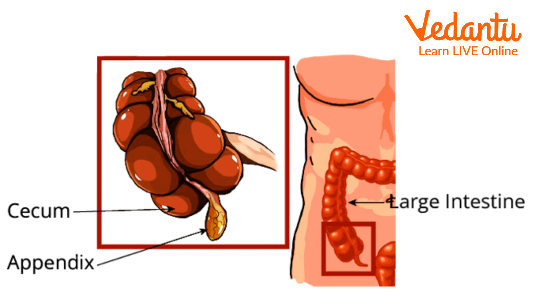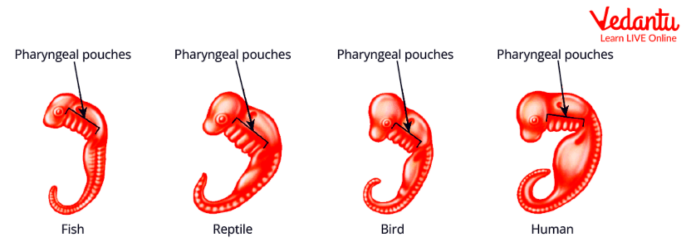Various Evidences of Evolution
All life forms like plants, animals or microbes comprise biodiversity on earth. All of these organisms have a long history of changes and the study of the history of life on earth is called Evolutionary Biology. Evolution means the act of variation from one form to another form.
Many important pieces of evidence are present in nature that support the concept of evolution. These evidences clearly demonstrates that the various new life forms have evolved since the creation of earth.
Types of Evidence
Evolution as we all know is genetic change in a population of organisms over time. can observe evolutionary relationships between the organisms. Also, we have four types of evidence gathered by scientists to support the concept of evolution like fossils or paleontological, morphological embryological and biogeographical.
Paleontological Evidence
Organisms have appeared and disappeared, and have changed over time and extinction of species also took place. Some transitional forms of organisms reveal links between groups like Archaeopteryx: between reptiles and birds, Eustheopteron: amphibious and Seymouria: reptile-like amphibia. This indicates the ancient climate and environmental conditions, development of life from simple to complex and that life began in water.
We have studied about the different types of fossils found till date, like Imprint (thin, soft object is buried and sediments), Mould (Buried organism disappears and leaves an empty space), Petrification (minerals replace hard part of organism), Amber (entire organism fossilised in tree sap), Frozen (entire organism frozen in ice) or Trace (footprints, trails), etc.
The depth of fossils help to determine their age. The lower layers are older than those in the upper layers. It can also be detected by methods like Radioactive Isotope Dating using Carbon-14, Uranium-238 and Potassium-40 isotopes.

Types of Fossil
Morphological and Anatomical Evidence
The Study of anatomical structures to find similarities and differences gave one more evidence to evolution.
Homologous Structures – These are parts with similar basic structure (derived from same structures in embryo—same common descent), but may vary in function. Example: forearms of human, cat, bat, penguins and birds.

Forearms of Human, Cat, Frog, Bat, Bird
Analogous Structures – Structures that have the same function (may look somewhat alike), but have different structures and don't have a common descent. Example: wings have developed independently in insects, reptiles, birds, and bats.

Wings of Bat and Bird
Vestigial Structures – These include reduced body parts that have little to no function; remnants of ancestors. Examples: Human appendix (other mammals it is necessary to aid in digestion), human external ear muscle (useless, but still there), human tailbone (coccyx), human wisdom teeth, bird wings – Penguins adapted for swimming, ostrich wings for balance and courtship.

.
Appendix in Human

Coccyx Bone in Humans
Embryological Evidence
The science of the development of embryos from fertilisation to birth is called embryology. All vertebrate embryos exhibit pharyngeal pouches at a certain stage of their development. These features, which develop into neck and face parts, suggest relatedness of different organisms with each other. Patterns of embryological development can indicate a common ancestry. Fish, birds, mammals and reptiles all have gills; only fish retain theirs and fish, birds, humans and reptiles all have tails; but humans retain theirs.

Embryos of Fish, Reptile, Bird and Human
Biogeographical Evidence
Biogeography is the scientific study of the geographic distribution of organisms based on both living species and fossils. Similar environments around the world contain organisms that are different species but have similar anatomies and/or behaviours that lead to common structures and or behaviors that aid survival or reproduction Example: meerkats and prairie dogs.
Additionally, organisms from common ancestors will change in structure and function to adapt to their specific environment. Example: Remote islands (i.e. Galapagos) animals that live there exhibit unusual behaviours. Many species are unusually fearless.
Important Questions
1. Why do some species live and some get extinct?
Ans: Extinction is frequently caused by a change in environmental conditions. When conditions change, some species retain adaptations that allow them to survive and reproduce, while others donot.However, species will occasionally evolve the necessary adaptations, over numerous generations, If the environment changes slowly enough. However, still, and if members of that species lack the traits they need to survive in the new environment, If conditions change more quickly than a species can evolve.
2. If humans evolved from apes, why are there still apes?
Ans: Humans didn't evolve from present-day apes. Rather, humans and apes share a common ancestor that gave rise to both. This common ancestor, although not identical to modernistic apes, was almost clearly more apelike than humanlike in appearance and demeanour. At some point, scientists estimate that between 5 and 8 million stretches ago; this species diverged into two distinct lineages, one of which were the hominids, or humanlike species, and the other finally evolved into the African great ape species living now.
Practise Questions
What is another name for human evolution?
Neogenesis
Arthopogenesis
Metagenesis
Species inhabiting different geographical areas are called_____.
sympatric
allopatric
biospecies
Answers
(b)
(b)
Conclusion
Species are units of evolution evolutionary changes are more random and less progressive in nature speciation is basic process in evolutionary change. These changes may be gradual or fast and maybe beneficial or destructive. Scientists have discovered many pieces of evidence like fossils, anatomy and embryo studies to prove the concept of evolution. Many of them have even given many theories for the origin of life on earth.


FAQs on Evidence of Evolution
1. What is meant by the evidence of evolution?
Evidence of evolution refers to the collection of scientific observations and data from various fields that support the theory that life on Earth has changed over geological time. This evidence demonstrates that all species are descendants of ancient ancestors and have diversified through processes like natural selection. Key examples include the fossil record, comparative anatomy, and embryology.
2. What are the five main categories of evidence for evolution as per the CBSE syllabus?
The five principal categories of evidence supporting the theory of evolution are:
- Paleontological Evidence: Based on the study of fossils, which show a historical sequence of life forms.
- Morphological and Anatomical Evidence: Compares the physical structures of different species, including homologous, analogous, and vestigial structures.
- Embryological Evidence: The study of similarities in the embryonic development of different vertebrate species.
- Biogeographical Evidence: Examines the geographical distribution of species, like the unique fauna of Australia.
- Biochemical Evidence: Compares DNA, RNA, and protein sequences to find similarities between organisms, indicating a common ancestry.
3. What is the difference between homologous and analogous structures?
Homologous structures are organs or bones that appear in different animals, showing anatomical similarities from a common ancestor, but may perform different functions. For example, the forelimbs of a human, a bat, and a whale are homologous. In contrast, analogous structures have similar functions but do not share a common ancestral origin; they evolved independently. For example, the wings of a bird and the wings of an insect are analogous.
4. How do fossils provide concrete evidence for evolution?
Fossils provide direct evidence by showing a chronological record of life. They reveal transitional forms, such as Archaeopteryx, which shows features of both reptiles and birds, linking these two groups. The fossil record also documents the existence of now-extinct species and illustrates the gradual modification of organisms over millions of years, from simpler to more complex forms.
5. Why do organisms, including humans, possess vestigial structures like the appendix?
Vestigial structures are remnants of organs or features that were functional in an organism's ancestors but have lost their original function in the modern species. The human appendix, for instance, is a reduced version of the cecum, which is much larger and used for digesting cellulose in our herbivorous ancestors. Its presence provides strong evidence of our evolutionary path and shared ancestry with other mammals.
6. If humans evolved from apes, why do modern apes still exist today?
This is a common misconception. Humans did not evolve from the apes we see today (like chimpanzees or gorillas). Instead, humans and modern apes share a common ancestor that lived millions of years ago. After this ancestral line split, one branch evolved towards modern humans, while other branches evolved towards the various species of modern apes. Therefore, apes are our evolutionary cousins, not our ancestors.
7. What is the evolutionary significance of all vertebrate embryos looking similar in their early stages?
The striking similarity among early vertebrate embryos, including the presence of gill slits and a tail in human embryos, is significant because it points to a shared genetic toolkit inherited from a common ancestor. These developmental features suggest that diverse vertebrates like fish, birds, and humans all originate from a common evolutionary blueprint, and their distinct adult forms are the result of modifications to this fundamental plan over time.










